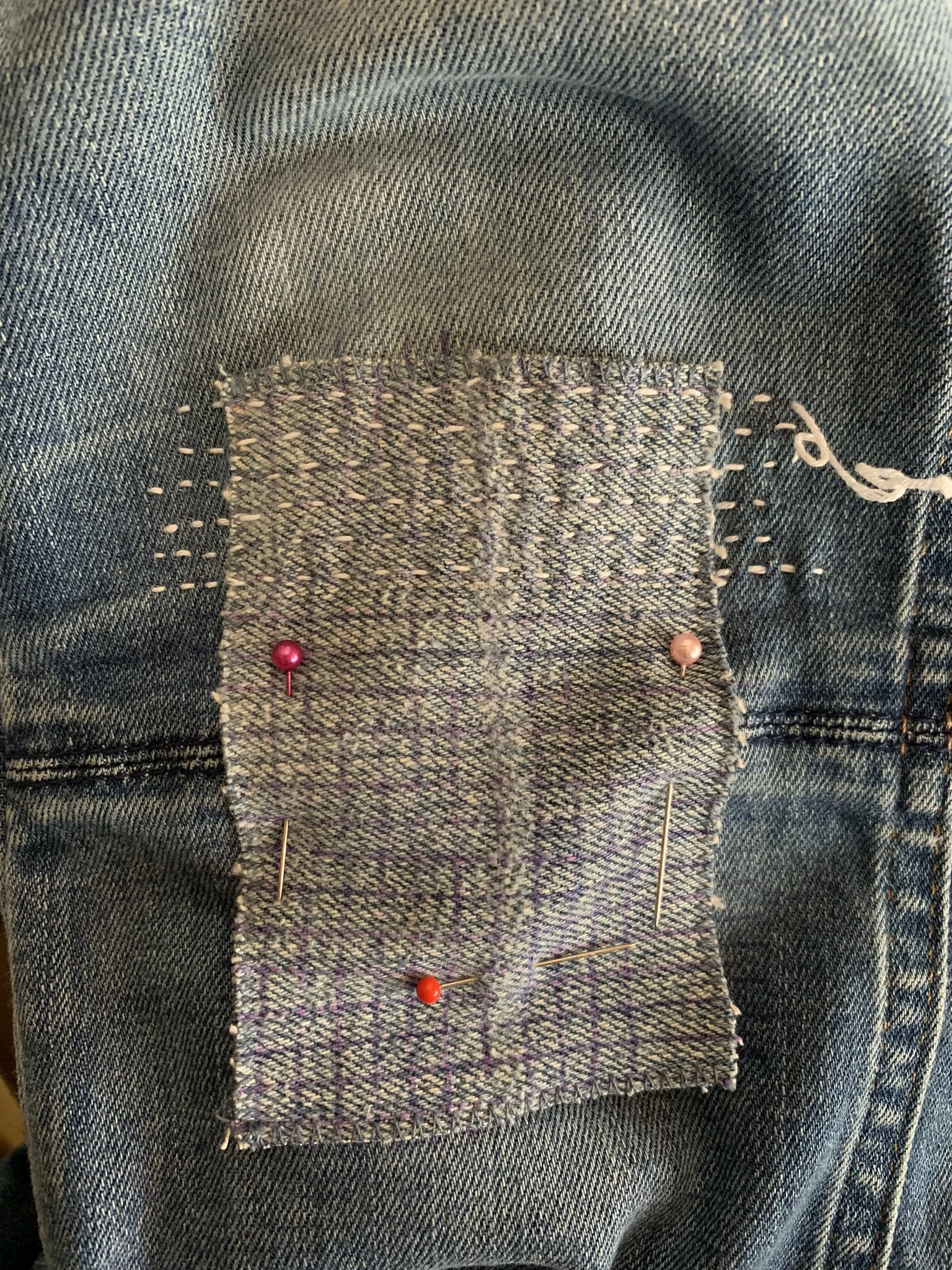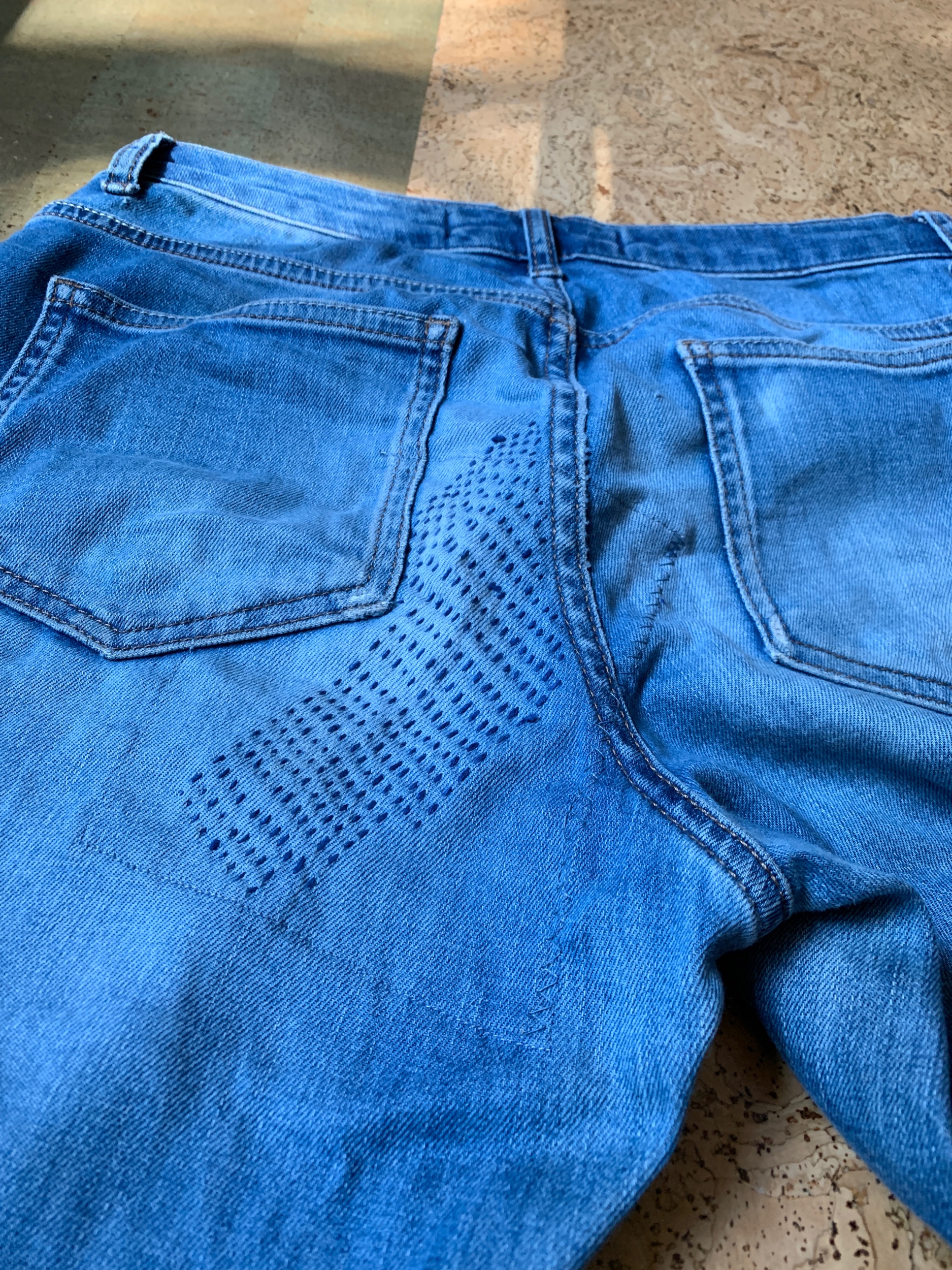Repairing worn clothing has always been part of my practice, but mostly from a utility standpoint. However, over the past couple years, through Tatter Blue Library and other publications, I’m learning that mending can really be an art form.
Of late, my sewing has been in the form of patching little boys’ pants. (I have a rule that I will only patch a patch once…after that, pants are usually cut off and hemmed into shorts.) Darning wool socks has always been an easy activity to do while watching TV, and since they are hidden inside shoes, it doesn’t have to look great. I’ll sew up hems and repair buttons, but with the exception of my favorite Patagonia sweatshirt that I repair every snag on, I didn’t pay much attention to my own clothes.
That changed when I learned more about sashiko and the art of visible mending. Sashiko means “little stabs” and it is part of Japanese tradition, born of necessity. Importantly, this decorative stitching isn’t just about repairing but extending the life of the fabric by reinforcing the area before a tear or hole. So I started on a pair of jeans that fit me perfectly, but are starting to show signs of wear.
It took a couple new supplies (links below) to get started, but the learning curve was pretty small, especially if you’ve ever sewn by hand before. And it comes together pretty quickly. While I haven’t yet explored more complex designs, this certainly isn’t my last garment that will use sashiko mending.
To get through multiple layers of denim, you need a good leather sashiko thimble. And best to get proper needles, so you can fit as many stitches as you can on it. I suggest a kit that has everything to get you started.
Sashiko stitches are pretty easy to learn, because you are following a grid. Use a fabric pen or chalk to make your guidelines.
Ready to wear!
Also, reinforced the seat, which gets a lot of concentrated wear from my bike saddle.
Patches!
And more patches!
Repairing is such a huge part of our conservation of resources - it is great to be able to do it in a way that enhances or alters the garment for the better! A tradition worth continuing.
For more info on the history of mending, check out these resources:
“Mending Matters: Stitch, Patch, and Repair Your Favorite Denim & More” by Katrina Rodabaugh
“Boro - Rags And Tatters From The Far North Of Japan”
“Alabama Stitch Book: Projects and Stories Celebrating Hand-Sewing, Quilting and Embroidery for Contemporary Sustainable Style” by Natalie Chanin
“Riches from Rags: Saki-Ori and other Recycling Traditions in Japanese Rural Clothing”
Great “vintage” poster from Victory Gardens of Tomorrow.








